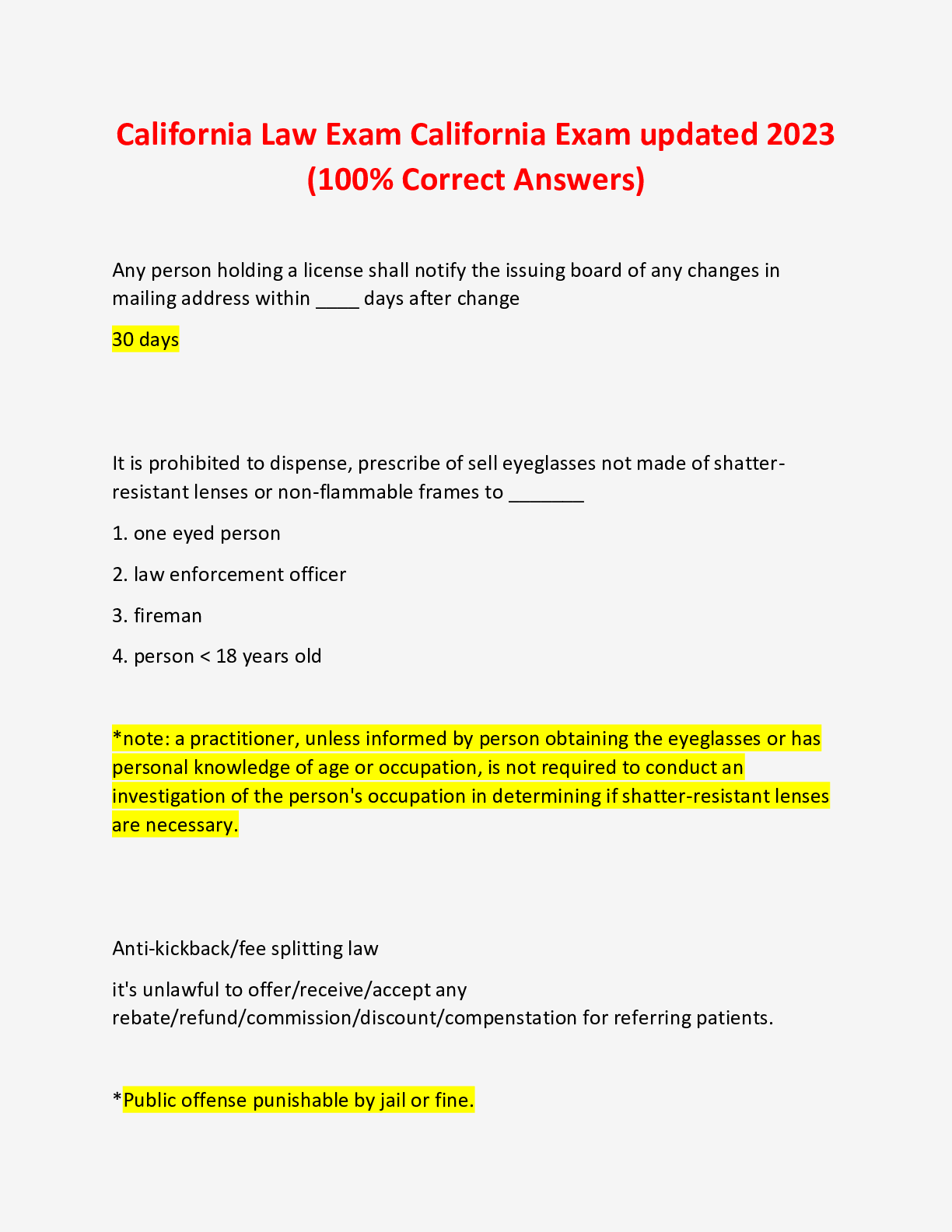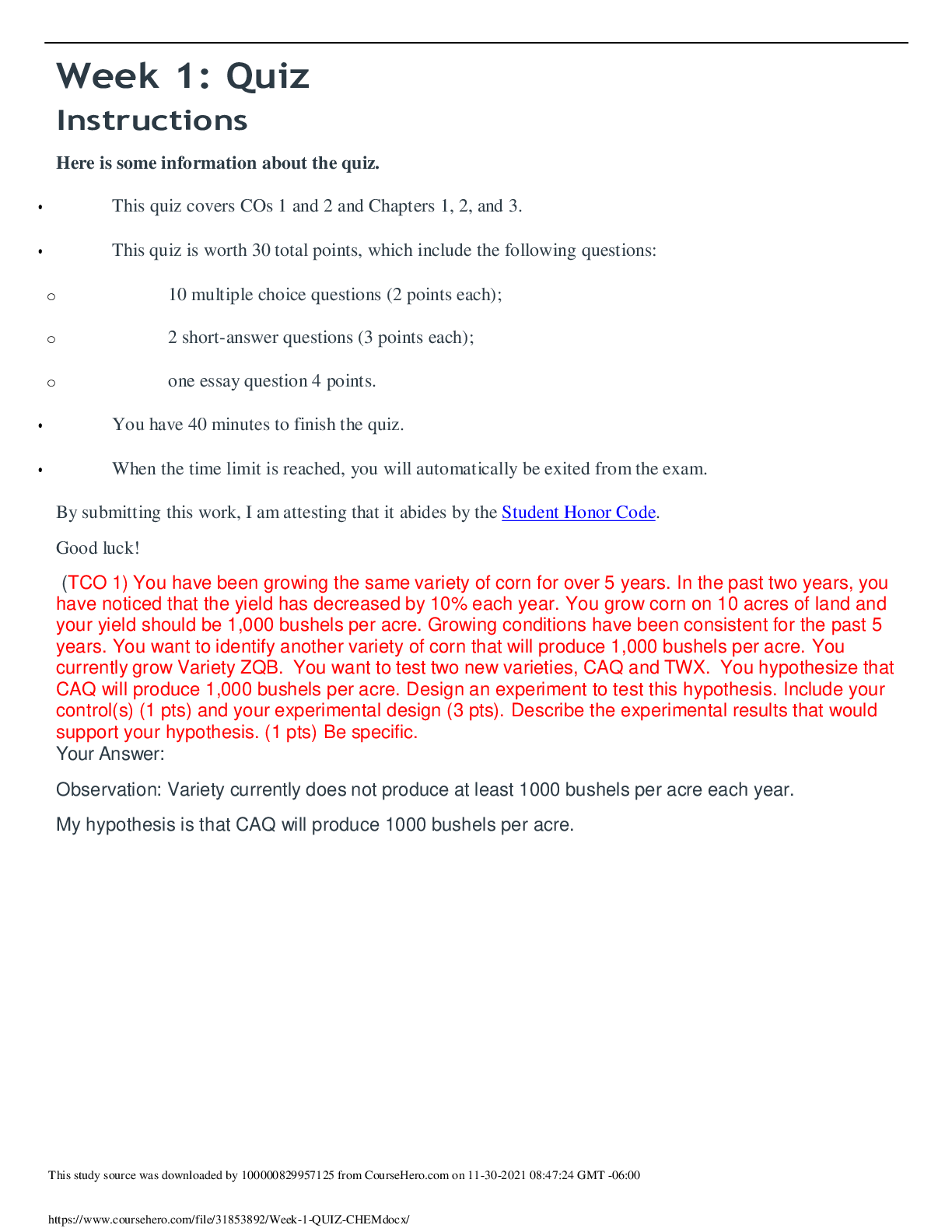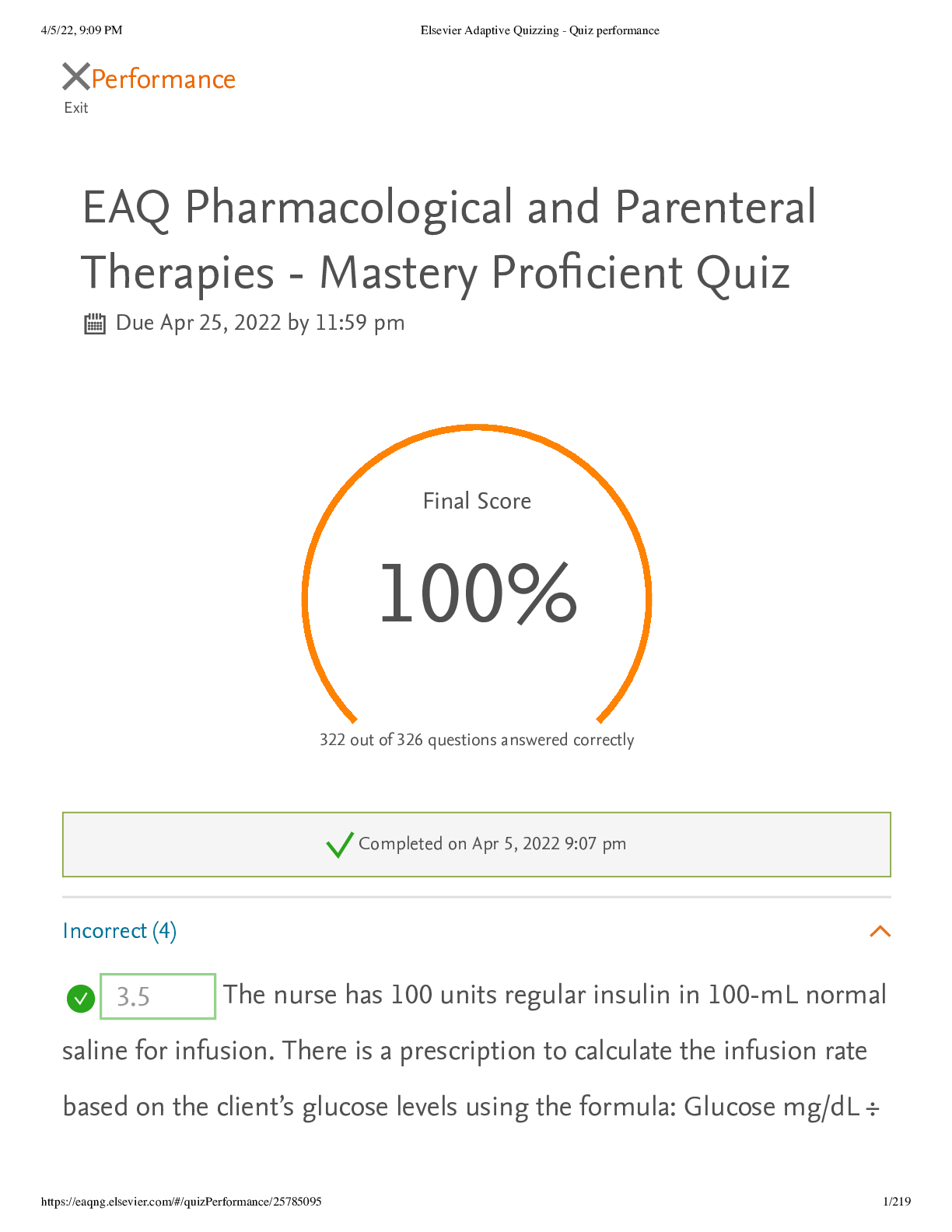{SOLVED) HPR 205 The Human Body, Health & Disease week 4 Quiz | GRADED A
Document Content and Description Below
1. Question : Type AB is the universal donor. Student Answer: Instructor Explanation : True False The answer can be found on p. 325, Anatomy, Physiology, and Disease ... Question 2 . Question : Ischemia of the myocardium causes . Student Answer: myocardial infarction angina heart failure a murmur Instructor Explanation: The answer can be found on p. 312, Anatomy, Physiology, and Disease Question 3 . Question : This is the approximate number of red blood cells in one cubic millimeter of blood. Student Answer: 1 million 3 million 5 million 7 million Instructor Explanation: The answer can be found on p. 321, Anatomy, Physiology, and Disease Question 4 . Question : The average adult human has 4–6 liters of blood. Student Answer: Instructor Explanation : True False The answer can be found on p. 321, Anatomy, Physiology, and Disease Question 5 . Question : What is the MOST common blood type among Americans? Student A Answer: B O AB Instructor Explanation: The answer can be found on p. 324, Anatomy, Physiology, and Disease Question 6 . Question : It is called systole when the heart contracts. Student Answer: Instructor Explanation : True False The answer can be found on p. 308, Anatomy, Physiology, and Disease Question 7 . Question : also exhibits as a situation in which there is a higher than normal number of white blood cells. In this case, the cause is often an infection that is being fought. Student Answer: Sickle cell anemia Leukemia Leukocytosis Anemia Instructor Explanation: The answer can be found on p. 327, Anatomy, Physiology, and Disease Question 8 . Question : The domeshaped muscle that acts to ventilate is the diaphragm. Student Answer: Instructor Explanation : True False The answer can be found on p. 375, Anatomy, Physiology, and Disease Question 9 . Question : Strep throat can be caused by a viruses or bacterias. Student Answer: Instructor Explanation : True False The answer can be found on p. 357, Anatomy, Physiology, and Disease Question 10 . Question : The vocal cords are located in the . Student Answer: nasal cavity larynx oropharynx laryngopharynx Instructor Explanation: The answer can be found on p. 356, Anatomy, Physiology, and Disease Question 11 . Question : The nasal cavities are separated by a septum. Student Answer: Instructor Explanation : True False The answer can be found on p. 351, Anatomy, Physiology, and Disease Question 12 . Question : Cilia are microscopic, hairlike structures. Student Answer: Instructor Explanation : True False The answer can be found on p. 355, Anatomy, Physiology, and Disease Question 13 . Question : Asthma is a potentially lifethreatening condition. Student Answer: Instructor Explanation : True False The answer can be found on p. 367, Anatomy, Physiology, and Disease Question 14 . Question : Females have all the eggs they will ever have by the age of . Student Answer: five months before they are born five months after they are born five months after the onset of puberty age 15 Instructor Explanation: The answer can be found on p. 493, Anatomy, Physiology, and Disease Question 15 . Question : Which of the following is NOT a function of estrogen? Student Answer: Stimulates development of uterine lining. Relaxes the pelvic joints. Negates the effects of progesterone on uterine contractions. All of the above are functions of estrogen. Instructor Explanation: The answer can be found on p. 496, Anatomy, Physiology, and Disease Question 16 . Question : The prepuce is a small erectile structure in women. Student Answer: Instructor Explanation : True False The answer can be found on p. 490, Anatomy, Physiology, and Disease Question 17 . Question : There are 46 chromosomes in the human body. Student Answer: Instructor Explanation : True False The answer can be found on p. 484, Anatomy, Physiology, and Disease Question 18 . Question : Menstruation is the term given to the actual shedding of the . Student Answer: perimetrium myometriun endometrium exometrium Instructor Explanation: The answer can be found on p. 489, Anatomy, Physiology, and Disease Question 19 . Question : How many chromosomes will you find in a successfully fertilized egg? Student Answer: 21 pairs 46 pairs 23 pairs 16 pairs Instructor Explanation: The answer can be found on p. 484485, Anatomy, Physiology, and Disease Question 20 . Question : The exchange of oxygen and carbon dioxide takes place in the venules. Student Answer: Instructor Explanation : True False The answer can be found on p. 330, Anatomy, Physiology, and Disease [Show More]
Last updated: 1 year ago
Preview 1 out of 8 pages
.png)
Reviews( 0 )
Document information
Connected school, study & course
About the document
Uploaded On
May 15, 2021
Number of pages
8
Written in
Additional information
This document has been written for:
Uploaded
May 15, 2021
Downloads
0
Views
33



.png)














.png)
.png)
.png)
















